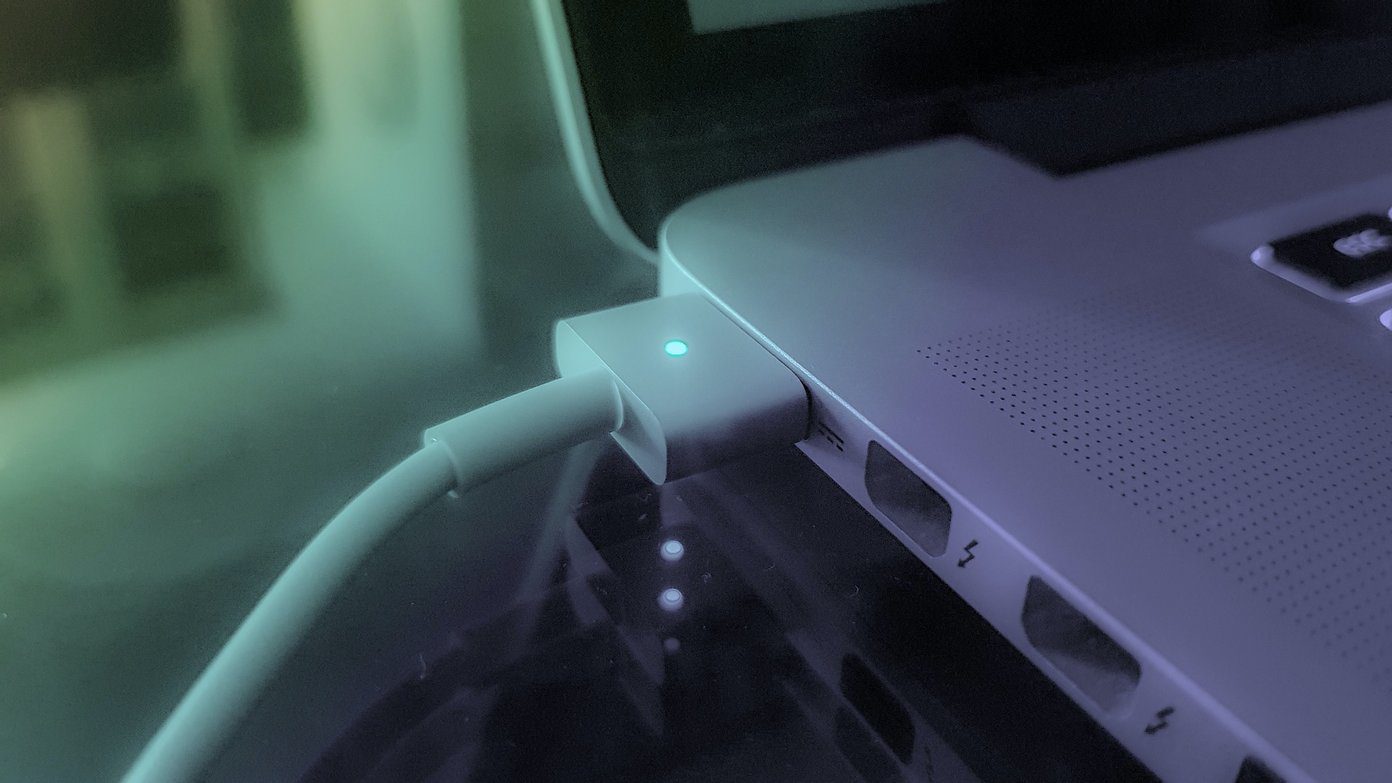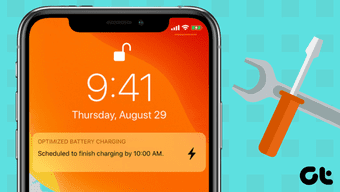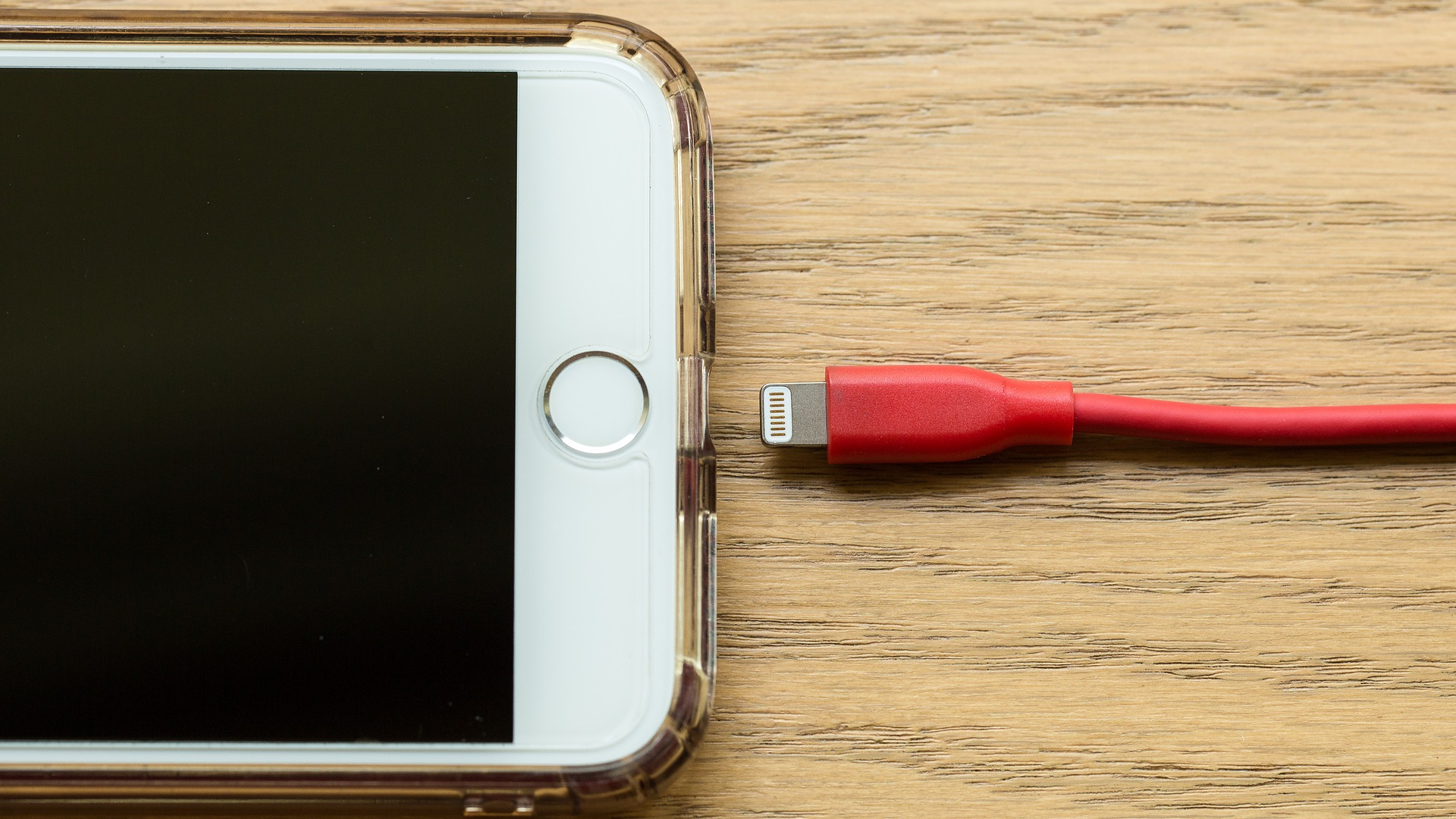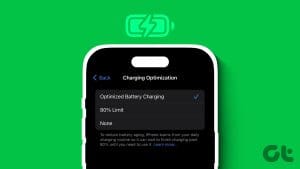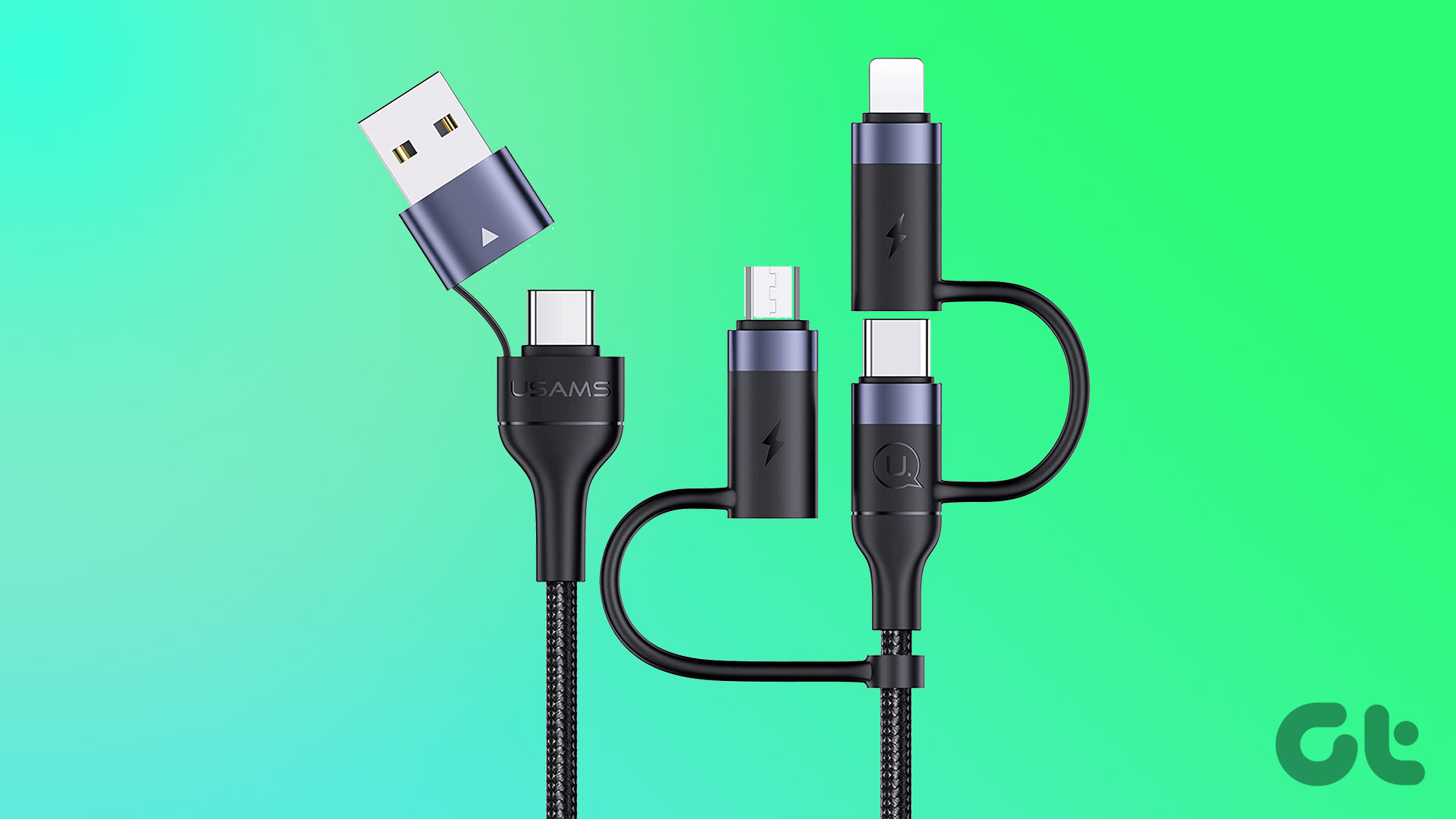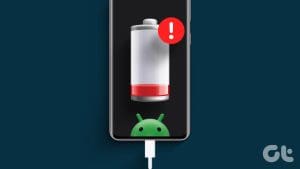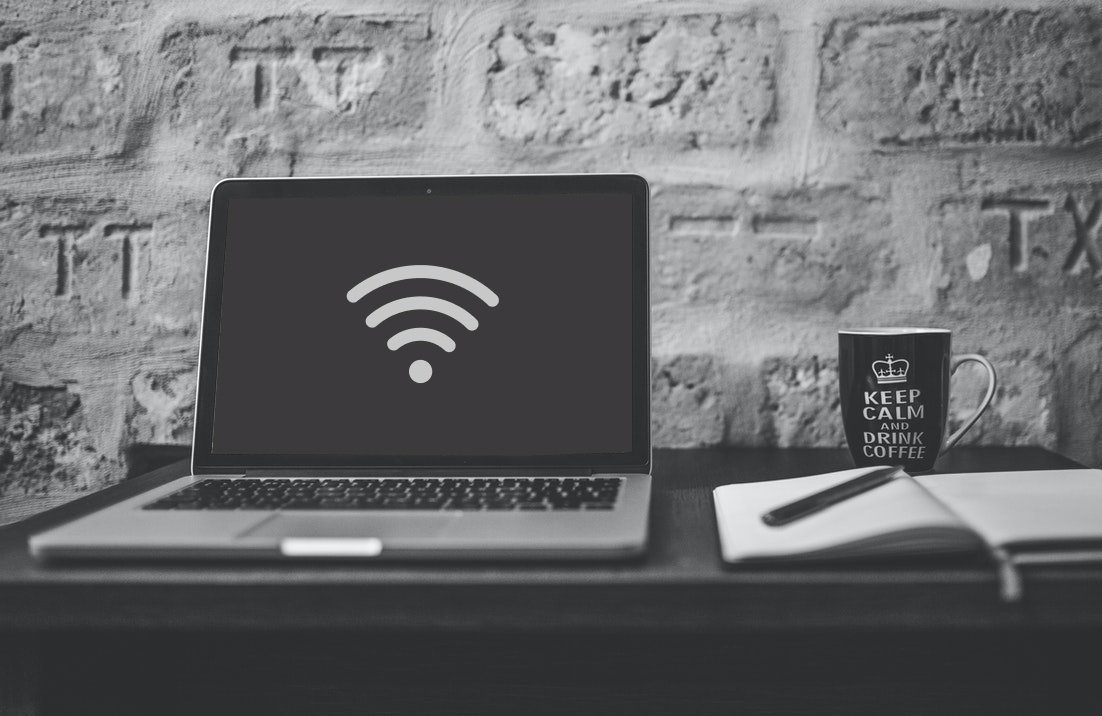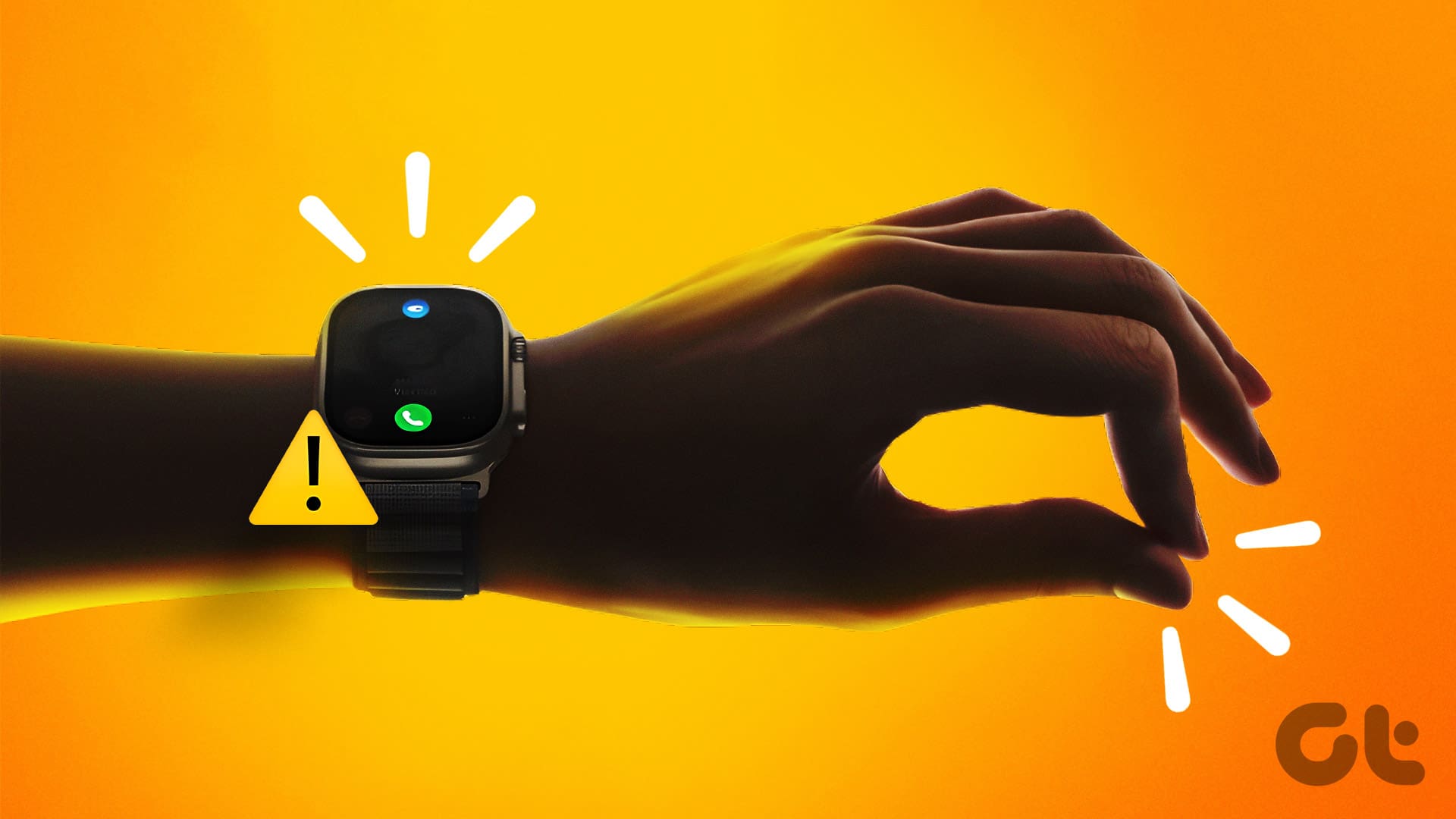Our phones have become our lifelines; naturally, we take care of them with a strong passion. Though surprisingly most owners ignore one precious aspect or they just aren’t aware of it, i.e., the right way of charging your iPhone. But don’t worry, this guide covers some essential iPhone battery charging tips to help you charge your device correctly and prolong its battery life.
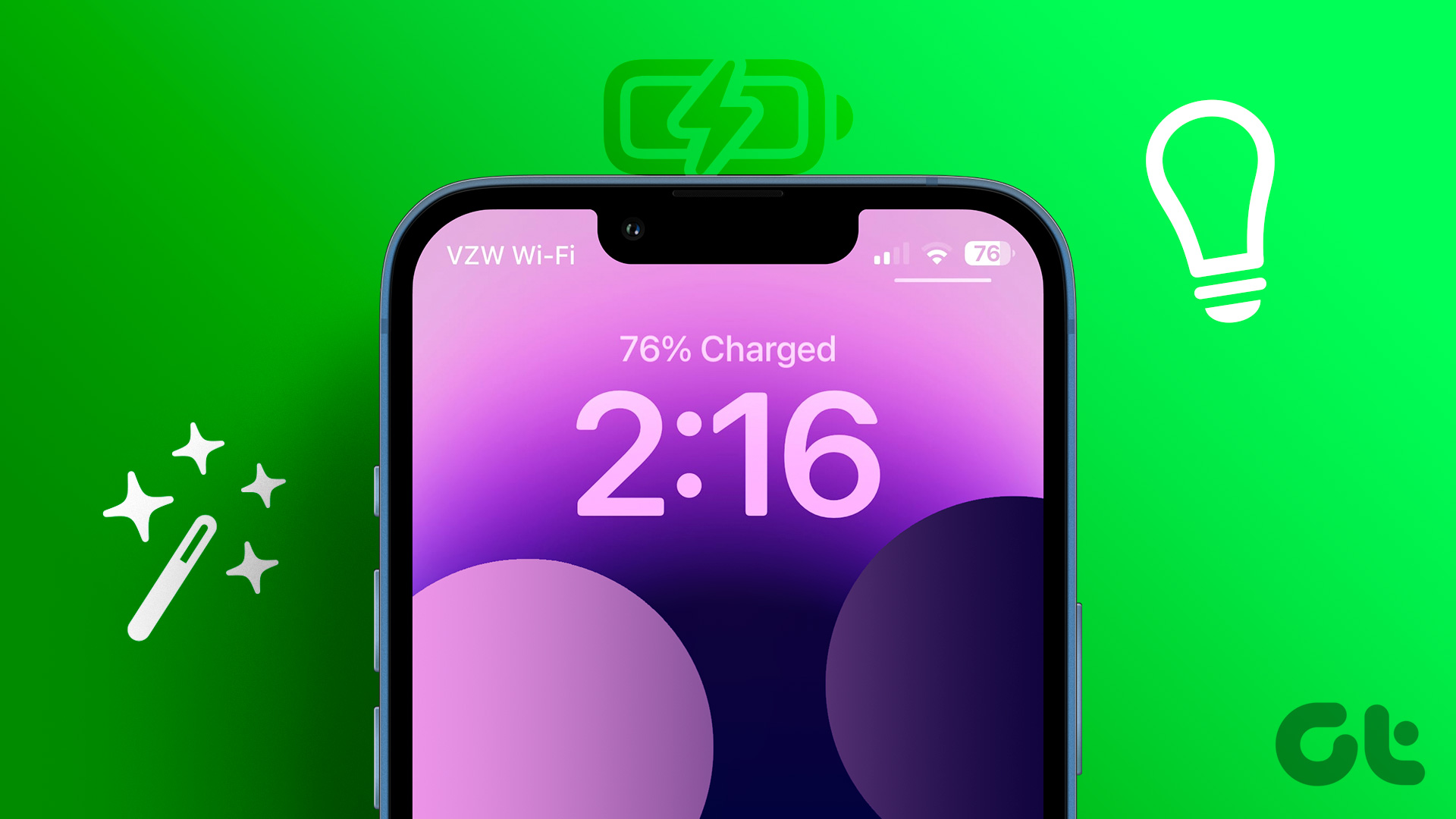
Everyone has their own style, cycle, preferences, and comfort of charging. However, certain habits might be harming their iPhone’s battery health without their realization. So, let’s clear the air, answer some common queries, and discuss some ways you can take care of your iPhone’s battery.
Should I Charge My iPhone to 100 Percent
Well, it’s neither here nor there. Charging your phone to 100% is not extremely problematic, so you can go for it daily or occasionally if you’ve strenuous work/commute hours or traveling schedules.
However, keeping it at 100% for long, i.e., still charging after it is maxed out is a problem. It puts more stress on the battery and can affect its overall lifespan. So, as per Apple’s and our recommendation, do turn on Optimized Battery Charging (more info and steps shared later).
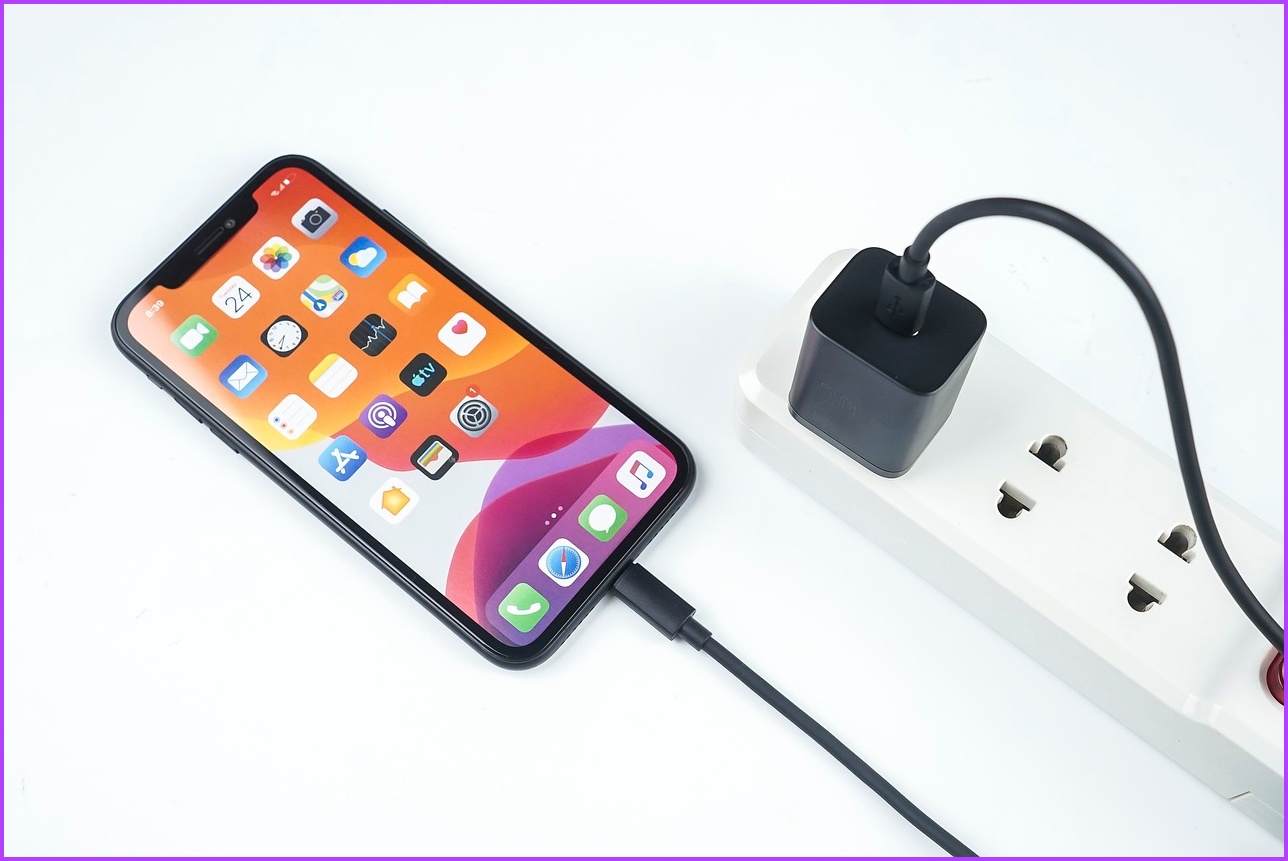
Moreover, experts claim that the lithium-ion batteries used in our smartphones are most efficiently charged within the range of 20 – 80%. So, if you’re able to maintain this sweet spot during charging, it’s a win-win situation.
At What Percentage Should I Start Charging My iPhone
Although there’s no specific percentage at which you should start charging, it’s generally recommended to not let the battery drop to zero. Mostly because completely draining the battery frequently can affect its ability to hold the charger, eventually, shortening the life of the battery.
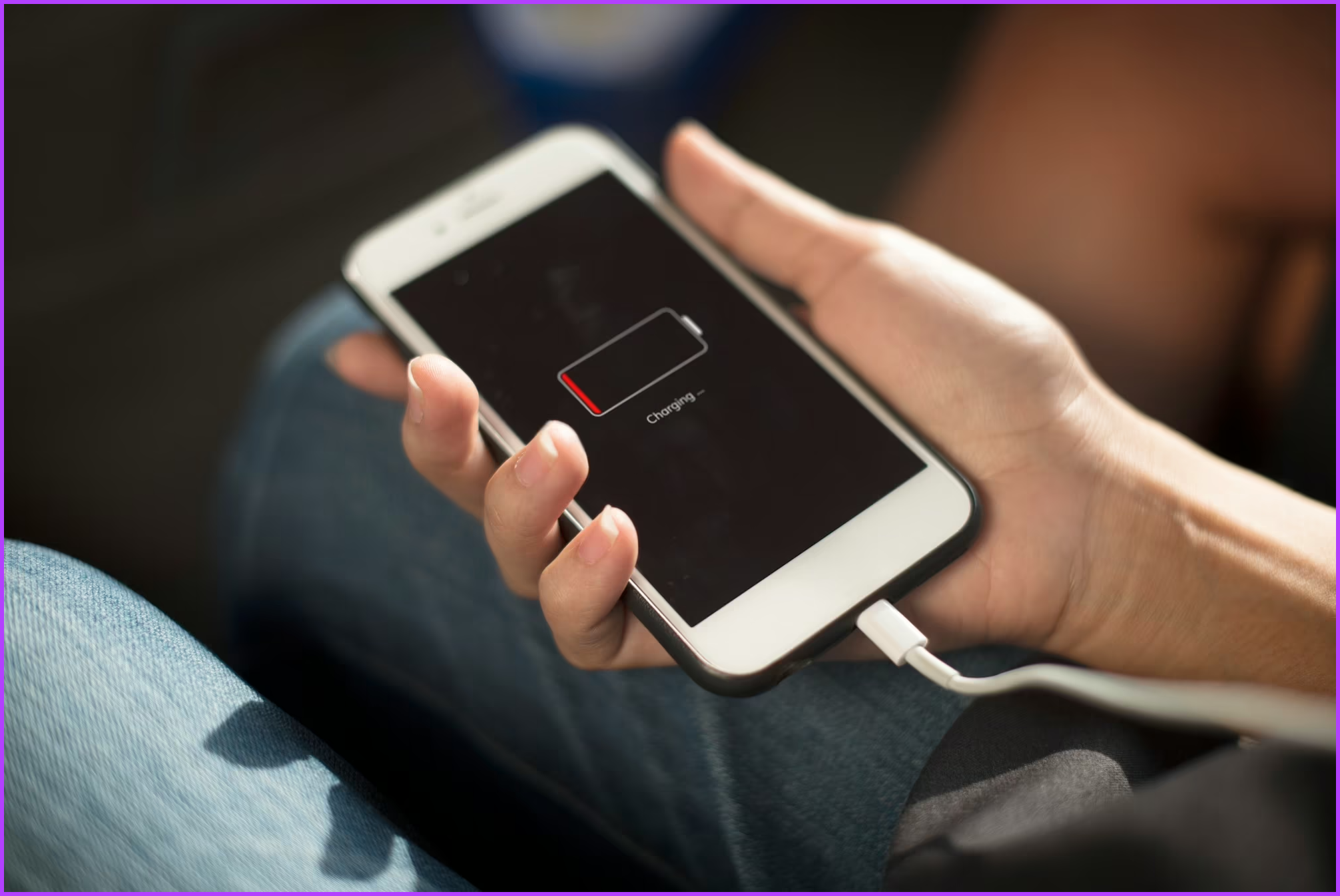
As mentioned above, 20% aka, Apple’s default low-power mode warning, could be considered the lowest limit. It’s also worth noting that frequent partial charges are better for your iPhone’s battery than infrequent full charges.
In simpler words, don’t wait until the battery level drops significantly. Charging the iPhone at any opportunity, whether it’s at 30, 40, or 60 percent is better than waiting and risking it dropping below the recommended percentage.
Can I Charge My iPhone Overnight
Many people wonder whether it’s safe to leave their iPhone charging overnight. And all thanks to Apple’s Optimized Battery Charging feature, it is perfectly safe to do so. The feature automatically learns your daily charging routine and accordingly, delays charging past 80% until it’s time to unplug.
So while you get 100% charge when you unplug, the phone does not stay at the 100% state for long. A win-win situation for you, the phone, and its battery life. What’s more, you can also set a battery-full alert and unplug it when it’s all juiced up.

Note: If the optimized battery charging is not working, try out these fixes.
How Often Should You Charge Your iPhone
Up till now, we’ve established some facts about iPhone battery charging,
- Do not charge your iPhone over 100%.
- Avoid taking your battery below 20%.
- Frequent partial charges are preferred over infrequent full charges.
Keeping these battery charging tips in mind, we can derive the conclusion that you can charge your iPhone as often as you need, just avoid taking it below 20%.
If you’re thinking about how it affects your charging cycle, then don’t worry. Interestingly, a full charge cycle is completed when your phone goes from 0% to 100% or any combination that adds up to 100%. So let’s say to take the device from 50 to 100%, then 40 to 90%, then it will complete one charge cycle (50+50).
Can I Use a Fast Charger for My iPhone
Absolutely, you can use a fast charger for your iPhone, although here are some things you should consider,
- Use an Apple-certified fast charger and cable – An MFI-certified charger and Lightning cable ensures both safety and efficiency. On the other hand, a non-certified can potentially damage your iPhone’s battery or even cause a safety hazard.
- Manage the heat – iOS and the battery are programmed to avoid overheating. Apple has even added a charging-on-hold setting to stop the device from heating up. However, you can also chip in to ensure proper heat dissipation, if you feel the phone is heating up, take off the case, especially if you use a thick protective case.
Does Wireless Charging Affect Battery Health in the Long Run
Wireless charging, like any other charging method, can affect battery health in the long run, but the impact is generally minimal.
Generally speaking, wireless charging generates more heat than wired charging. And excess heat harms overall battery health. However, experts agree that advanced smartphones (including iPhones) and wireless chargers are designed to manage heat effectively and minimize damage.
Therefore, it is necessary to use a certified wireless charger. Not necessarily a Magsafe one, but a trusted one for sure.
Some Generic Charging Tips for Maintaining Battery Health
1. Enable Optimized Charging
We’ve mentioned the feature multiple times in the article already. Now, let’s learn how to enable it. Go to Settings → Battery → Battery Health & Charging → Toggle on Optimized Battery Charging.
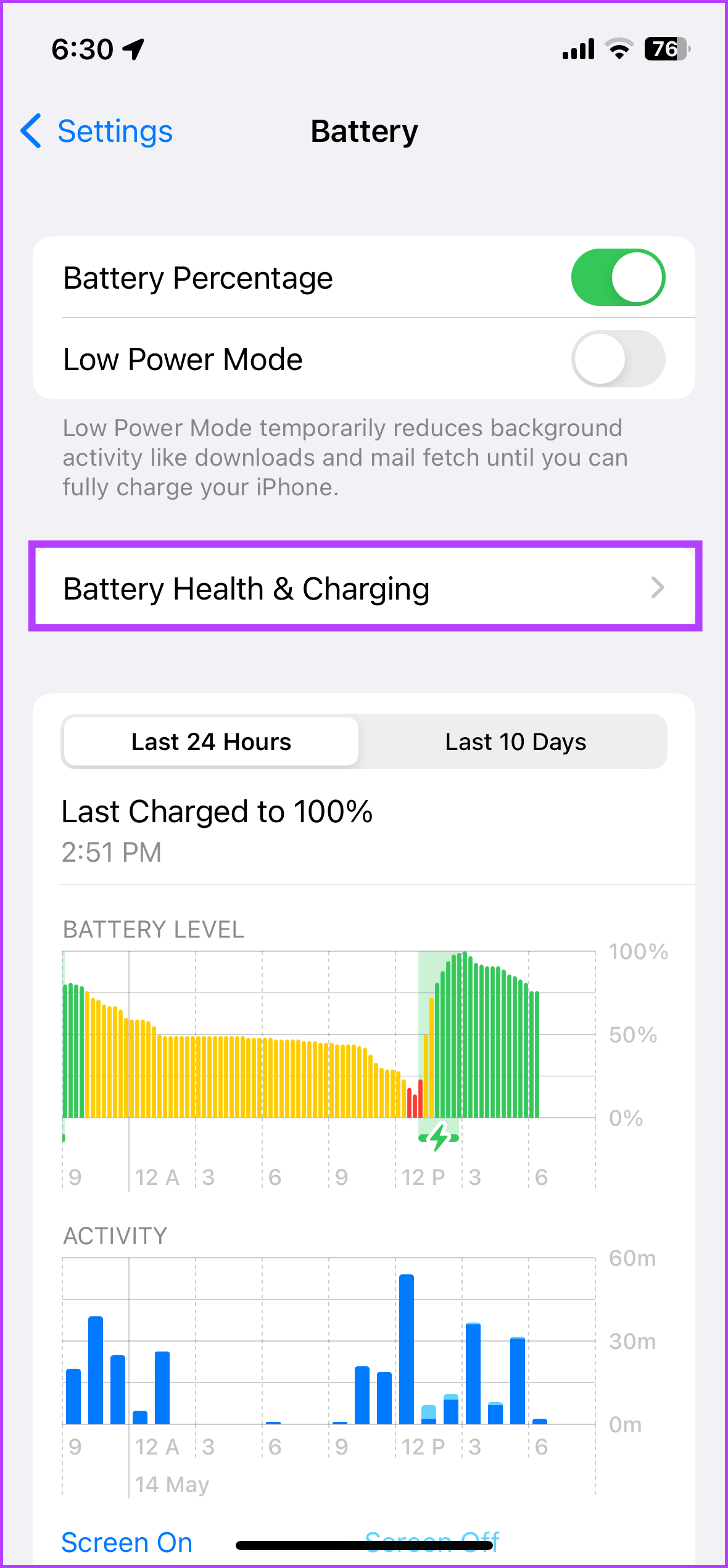
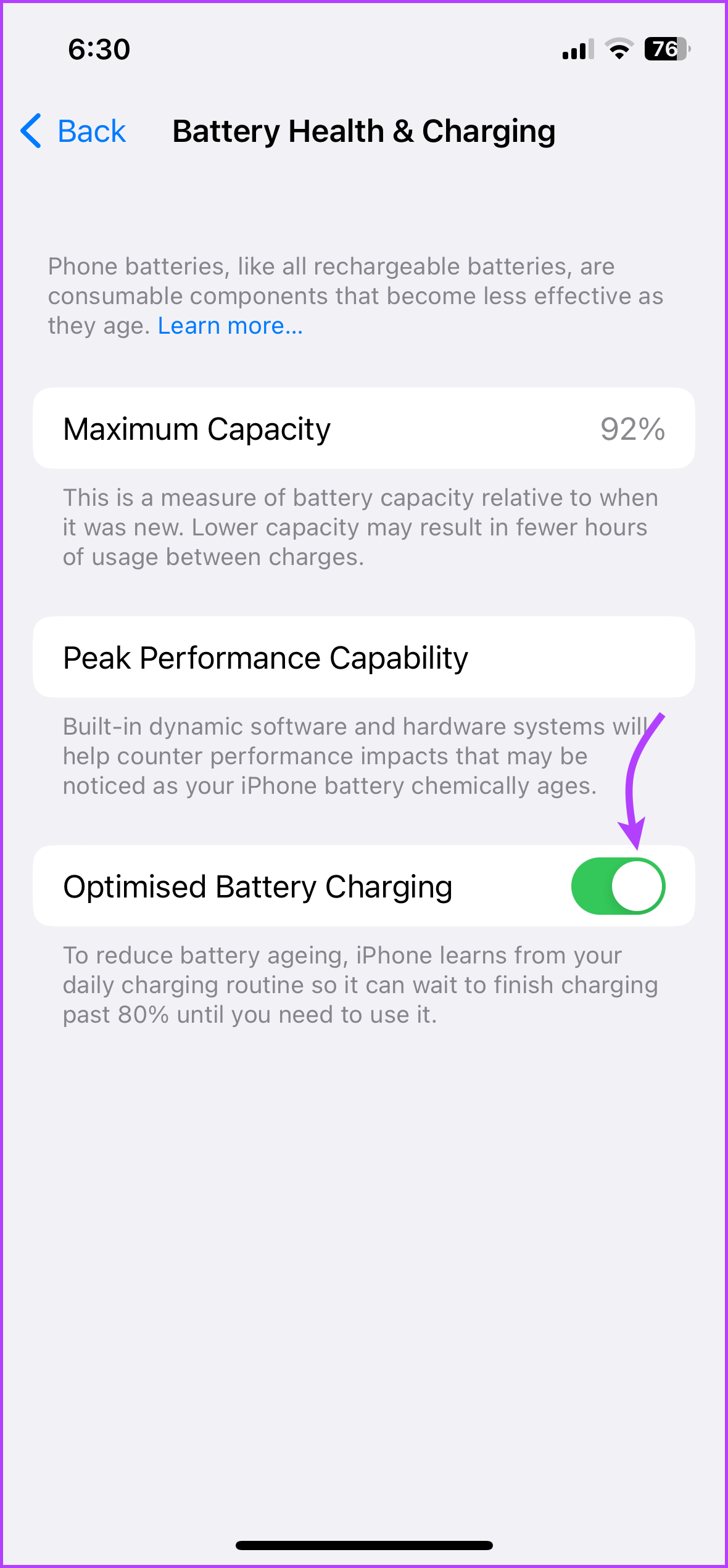
2. Maintain the Temperature of the Phone
High temperatures can not just affect the functions of your device, but also adversely affect the battery health. For one, the phone will lose its charge quite quickly. And if it heats up repeatedly, it will reduce the battery’s capacity to hold the charge.
So, whenever you find your iPhone getting too hot, try these methods to cool down the iPhone immediately. Avoid charging while it is hot, wait till it regains a comparatively normal temperature.
3. Optimize Your iPhone Settings
Every battery-saving guide will give you this suggestion. Our devices are packed with a multitude of features for our convenience. However, we’ll need to enable/disable these features or settings as per our use case to extend our day-to-day battery life.
Some examples include,
- Turn on auto-brightness.
- Toggle off background refresh for certain or all apps.
- Check which apps are hogging the battery and disable/delete them accordingly.
- Toggle on low-power mode when the phone is not in use.
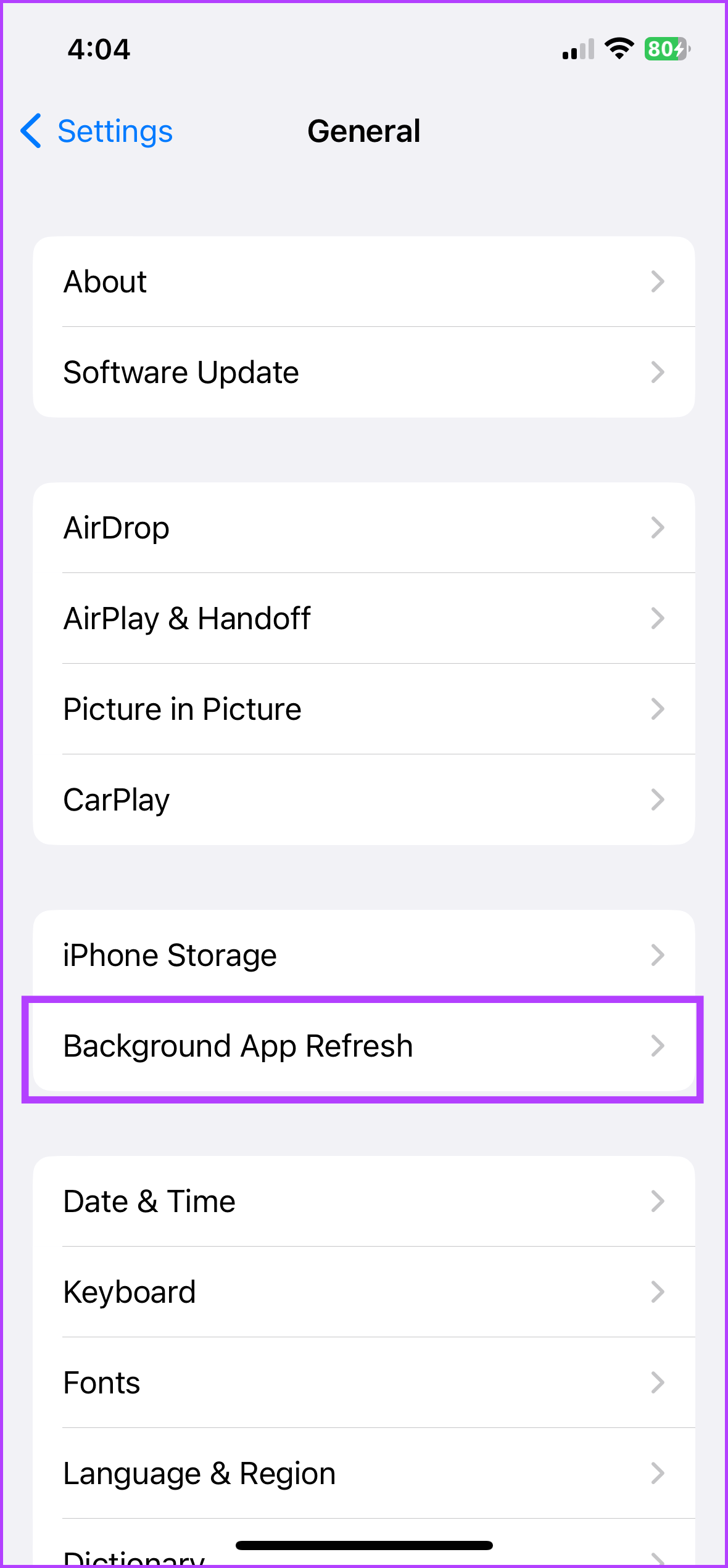
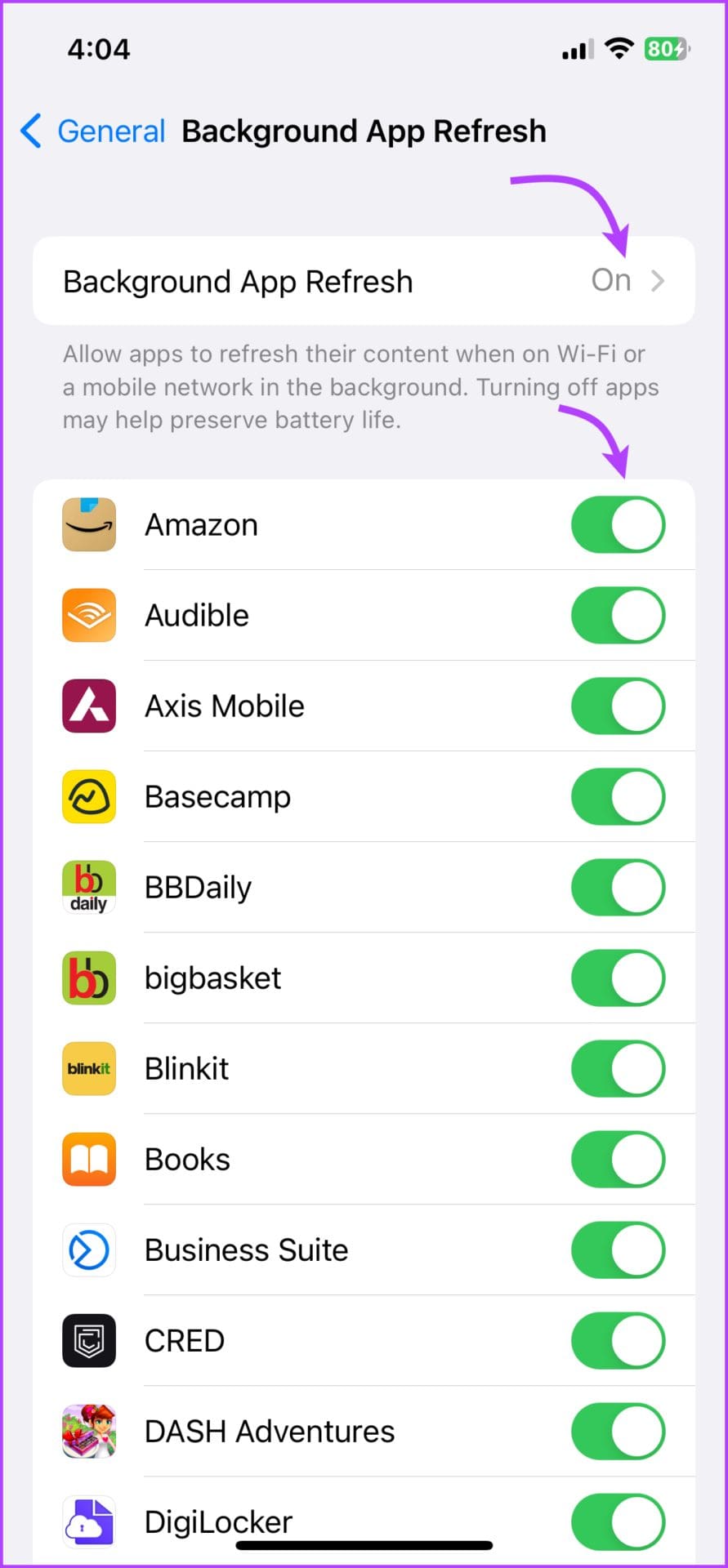
4. Use an MFI-Certified Charger and Cable
We can’t emphasize this point enough, so we’re repeating it. Companies have to pay a premium to Apple for MFI certification. Thus, these accessories are a bit more expensive than the other competitors.
But a certified accessory, marginally reduces the risk of phone or battery damage, data breach, etc. So, consider it a long-term investment for your phone’s prolonged life rather than an expenditure.
5. Choose to Update your iPhone Wisely
Some updates, especially the first few iterations of any new OS can be a battery hog. Sometimes, new bugs are introduced alongside the new features. Thankfully Apple actively processes and resolves these issues in the next update.
So, before you download a new update, just do a quick Google search about its effect on the battery. Update the iPhone, if all is well, or else wait for a few days.
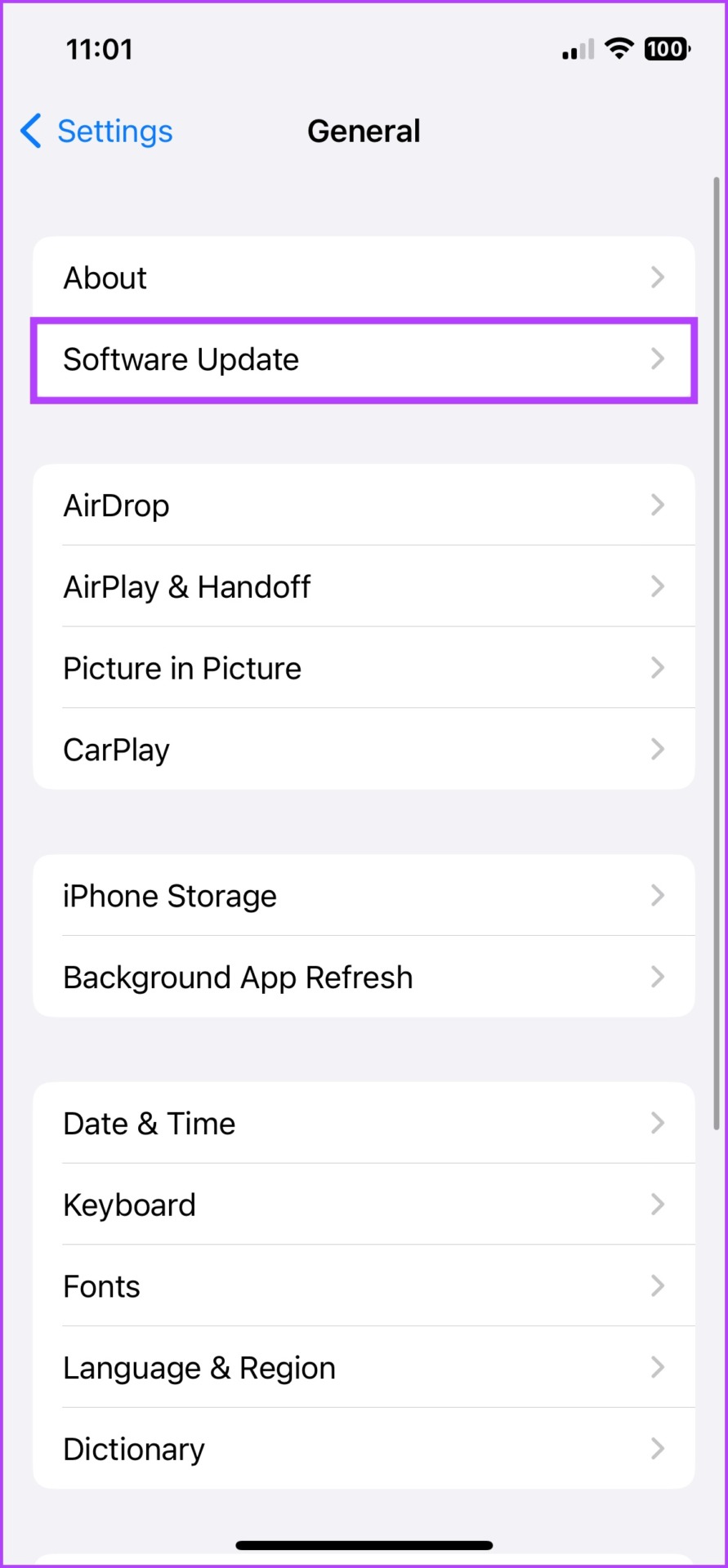
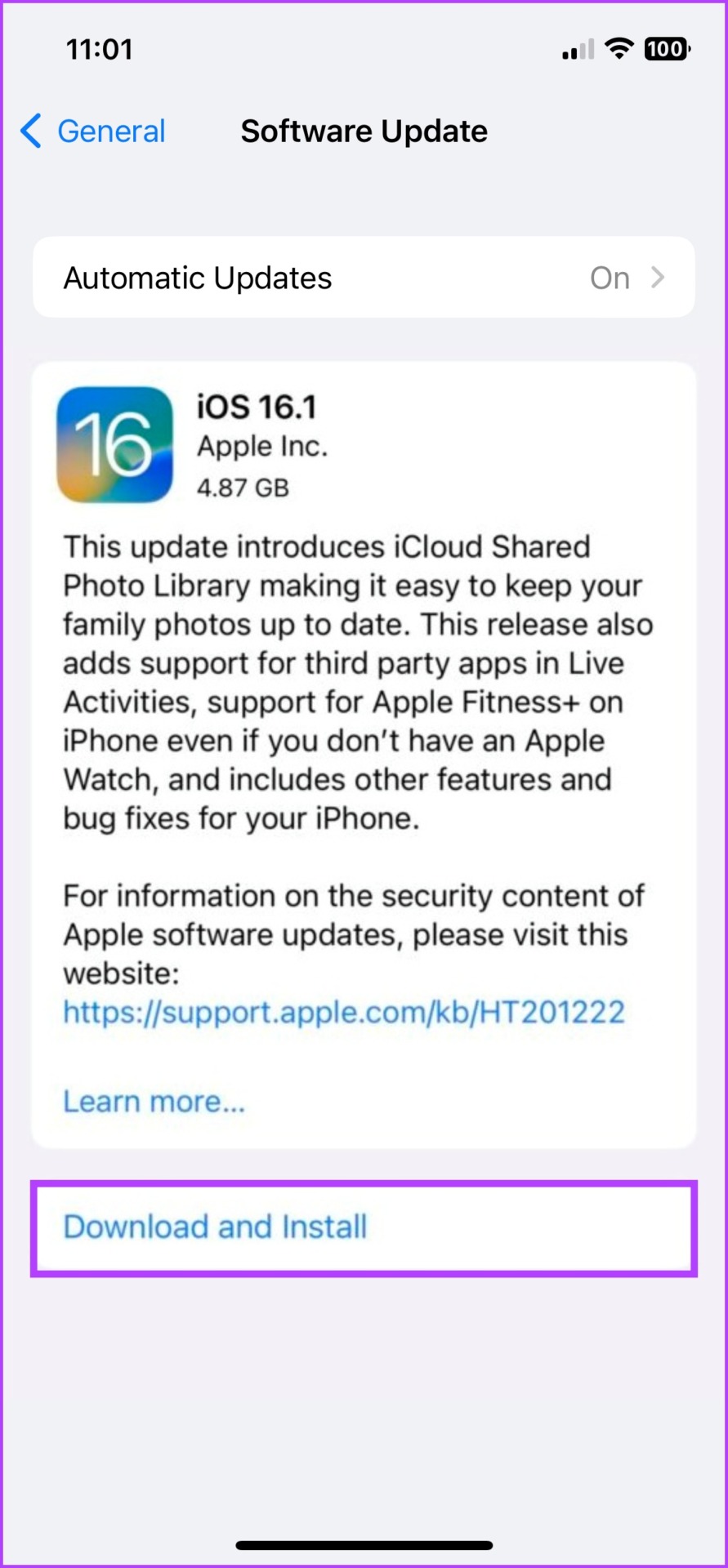
FAQs About Best Practices for iPhone Battery
Heat is the worst enemy of your iPhone’s battery. So, avoid exposing it to extreme temperatures or charging it while it’s warm. Furthermore, letting your battery drain completely frequently will also harm the battery’s overall lifespan.
You can take steps to stop it from degrading further, but you can’t really recover what’s been degraded. And if your battery health is significantly degraded, the best solution is to replace the battery.
There are multiple factors to consider. For instance, if the iPhone is in prime condition and can still avail iOS updates for at least two more years, then replacing a battery is a cheaper solution. However, if the phone is very old (almost outdated), changing the battery will improve things, but not for long. So, weigh the pros and cons carefully before you decide.
You need to understand that the batteries will degrade eventually. And all you can do is slow down the process with the iPhone charging tips mentioned above. So, keep an eye over the number but don’t fret unless it falls too quickly (in that case contact Apple Support).
Usually, the iPhone will alert you that the battery health is significantly degraded when the battery health dips below 80%. And while you can still use the iPhone without much issue, it won’t hold the charge as it used to, i.e. it will drain quickly.
While interrelated, these two are quite different terms. Battery health refers to the condition of your iPhone’s battery and how well it’s performing. Whereas, battery life refers to the amount of time your iPhone’s battery can last on a single charge.
Keep Your iPhone Battery Healthy
If you want your iPhone to last as long as possible, it is essential to take care of its battery life. We’ve provided you with the fodder, now it’s your turn to follow these iPhone charging tips and best practices mentioned in this article.
Hope it will help maintain your iPhone’s battery health and prolong its lifespan. If you have any concerns or queries, just share them in the comments section; we’ll be more than happy to help.
Was this helpful?
Last updated on 29 November, 2023
The article above may contain affiliate links which help support Guiding Tech. The content remains unbiased and authentic and will never affect our editorial integrity.


